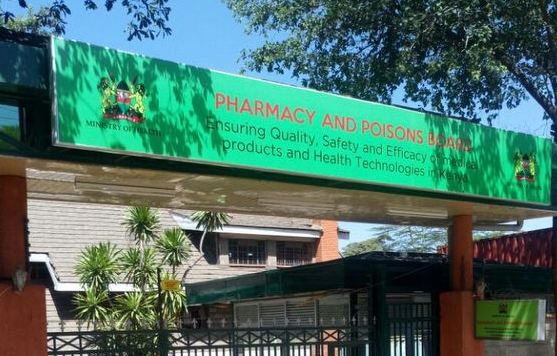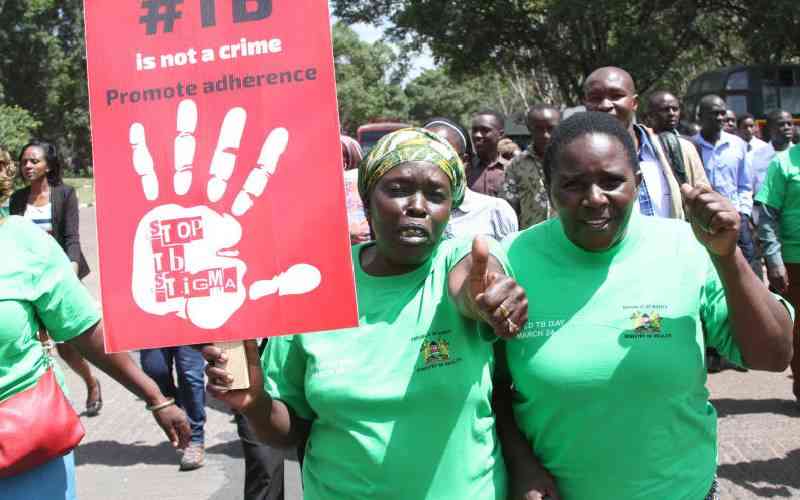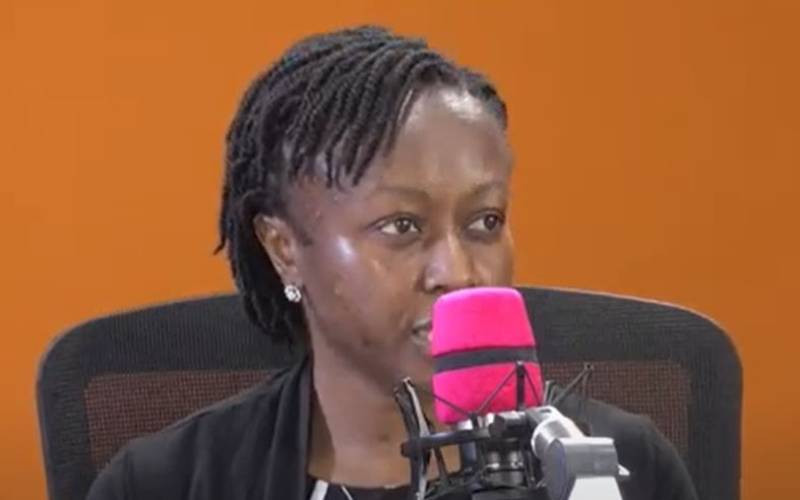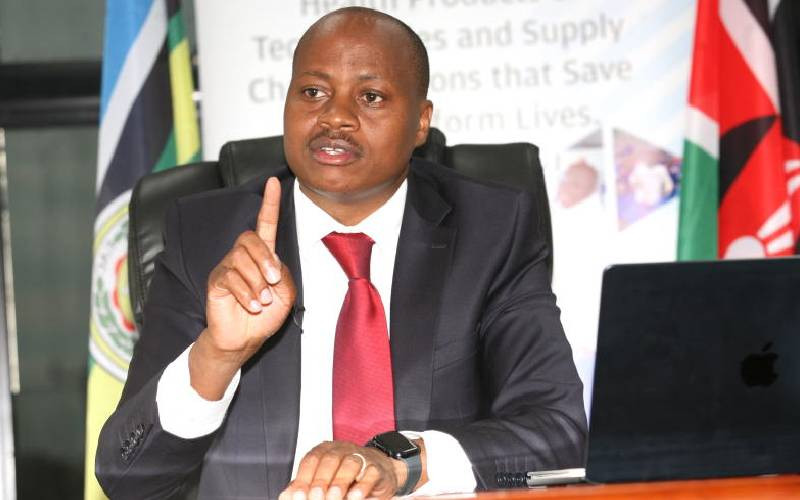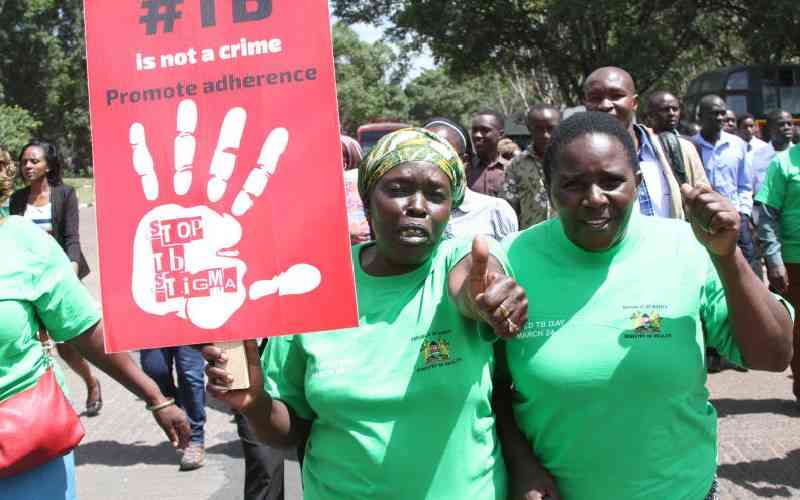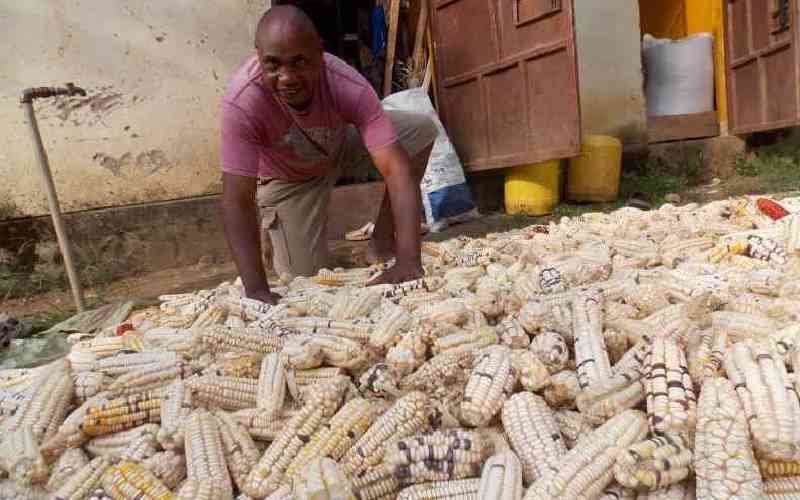
The sterile corridors of Kenyatta National Hospital pulsed with a subdued rhythm on that Tuesday afternoon.
Patients dotted the landscape – some resting on makeshift seats outside, others navigating the labyrinthine hallways with measured steps. Families clustered near entrances, their faces etched with a tapestry of emotions: hope wrestling with uncertainty, fear intertwined with resilience.
As I approached the Ear, Nose, and Throat (ENT) department on the first floor, the usual bustling waiting area seemed unusually quiet. At 12 noon, only a handful of patients occupied the space, yet the medical staff maintained their focused intensity.
In a small, unassuming room, a scene unfolded that would forever alter my understanding of childhood medical challenges. Six children sat in a semicircle, their young bodies seemingly dwarfed by the clinical environment. At the center, a doctor in soft pink scrubs engaged with them, her demeanor a blend of professionalism and compassion.
When our presence was noticed, the doctor prompted the children to greet us. Their response was anything but typical. Instead of the bright, lilting voices one expects from children under ten, a collective sound emerged that was hauntingly different. Each child’s voice carried a remarkable similarity – raspy, strained, as if struggling through a persistent obstruction. Their voices resembled the crackling attempts of teenagers during puberty, but with an added layer of audible discomfort.
The children introduced themselves, each voice a testament to a medical journey most would find difficult to comprehend. What I was witnessing was more than a routine medical consultation – it was a glimpse into the world of Recurrent Respiratory Papillomatosis (RRP), a rare condition that transforms childhood voices into whispers laden with medical complexity.
A smaller group of over 15 individuals, including children and adults, gather every three months at Kenyatta National Hospital’s ENT department for a vital support group meeting. The group, which has been active since 2019, provides a space for parents and caregivers of children battling RRP to share their struggles, triumphs, and ongoing challenges.
- For healthier lungs, avoid these 8 habits
- Recurrent Respiratory Papillomatosis silent threat to children
Keep Reading
Over the last four years, the group has been instrumental in offering encouragement to those who might have lost hope due to the persistent difficulties of dealing with RRP.Each parent and patient carries a unique story marked by resilience, moments of despair, and hope, particularly as many children face multiple surgeries. Some patients have undergone as many as 200, 104, or 32 surgeries, with the number of interventions often reflecting the severity and recurrence of the disease.
Nurse Consolata Gichigo, who coordinates and advocates for the support group, explains that the motivation behind its creation was to fill the gap between medical treatment and the emotional, psychological, and social support needed by both patients and caregivers.
“The group provides not only medical information but also emotional support for families navigating the complexities of RRP,” she says.
A major goal of the group is to provide firsthand, accurate information about the rare disease to those affected, so they can better understand its challenges and find ways to manage it.
However, there have been several challenges along the way. For instance, many patients experience delays in seeking treatment, often arriving at the hospital only when the condition has worsened to the point of complete airway blockage. Additionally, the lack of awareness about the disease, even among medical professionals, can result in misdiagnoses or delayed intervention.
One major breakthrough, however, has been the collaboration with the Social Health Insurance Fund (SHIF). After years of advocacy and education about the disease, SHIF has started covering the medical bills of patients even when they exceed the individual surgery limit, offering rebates to families who need more frequent treatments.
As Nurse Consolata notes, “Through education on the early signs of obstruction, we have not had a case of brain hypoxia for the past three years.” In addition, many parents who once feared having more children due to the possibility of passing on RRP now feel empowered to expand their families. For years, the fear of having another child affected by RRP kept them from considering it. But with increased understanding and better medical support, this fear has started to dissipate.
Parents attending the support group meetings are eager to share their personal stories, ask doctors questions, and discuss the various myths surrounding the disease. Despite their experiences, many still struggle to fully understand the complexities of RRP.
During the meetings, caregivers often ask about managing the disease, how to cope with its challenges, and how to debunk the myths that continue to surround it.

ENT surgeons and nurses at KNH have been at the forefront of addressing these questions and supporting the patients, offering both medical treatment and emotional encouragement. The work done by the support group, alongside the hospital’s dedicated medical professionals, has helped families feel less isolated in their journey with RRP, reinforcing the idea that they are not alone in their fight.
12-year-old Peter Dennis sits quietly, his tracheostomy covering a testament to his extraordinary journey. Dennis is not an ordinary child. Despite undergoing 32 surgeries and facing a respiratory condition that would break the spirit of many, his eyes sparkle with an unwavering dream of becoming a pilot.
At an age when most children are carefree and boisterous, Peter’s life has been a series of medical challenges. His mother, Caroline Wanjiku Githaiga, 43, recalls the beginning of their medical odyssey in 2015. “My son has gone through 32 surgeries,” she says, her voice a mixture of exhaustion and admiration. “There were times I would come to the hospital every month.”
When he speaks, his voice is a faint, hoarse whisper. To communicate, he must carefully hold his tracheostomy, each word a testament to his determination. The small piece of multicoloured cloth covering the medical device seems to symbolize his attempt to normalize his extraordinary experience.
“It’s been challenging,” Caroline explains. “Sometimes, SHIF has refused to cover some of the costs, leaving us to find money from wherever we can.” The financial burden has been immense, especially for a mother working without a stable income. Medical expenses for RRP can range from Sh50,000 to Sh100,000 per surgery, a sum that seems insurmountable for many families.
Despite the medical challenges, Peter remains vibrant. His teachers and classmates have learned to understand his condition. When he sleeps, his chest produces a distinctive whistling sound – a reminder of the respiratory challenges he faces daily. Yet, he continues to play, to dream, to hope.
The medical journey has been gruelling. There are times when his tracheostomy bleeds, moments of difficulty breathing that would intimidate even the strongest adults. But Peter’s spirit remains unbroken. His dream of becoming a pilot hasn’t wavered, a testament to the resilience of the human spirit.
For Caroline, embracing her son’s condition has become a way of life. Each surgery, each hospital visit, each challenging moment has been met with love, hope, and an unwavering belief in her son’s potential.
Dennis represents thousands of children battling rare medical conditions – children who refuse to be defined by their medical challenges. His dream of becoming a pilot isn’t just a childhood fantasy; it’s a powerful statement of resilience, of looking beyond current limitations.
In Peter’s world, a pilot’s dream isn’t about the ease of flight, but about the courage to rise above one’s circumstances, one breath at a time.
Stella Mmbone, a 48-year-old grandmother, sits with a heavy heart. Her weathered face bears the marks of worry, hopelessness, and quiet determination. At an age when many might be enjoying the fruits of their grown children, Stella is fighting a battle for her grandson’s survival and future.
The weight of her family’s fractured relationships is etched into every line of her expression. “They’ve blocked me,” she says softly, her voice trembling with a mix of pain and anger. “I can’t reach them anymore. Every time I’ve tried calling, they never pick up.” The “they” she refers to are her son and her grandson’s mother—those who should be supporting the child but have instead disappeared when medical expenses became overwhelming.
Stella’s story is one of cascading abandonment. First, her daughter-in-law left. Then her son left when he lost his job and could no longer afford the mounting medical bills. The child’s mother vanished when the medical complications became too challenging. Now, Stella stands alone, a solitary guardian fighting against seemingly insurmountable odds.
Her survival is a testament to resilience. Working casual jobs, sometimes finding employment just once a week, Stella does whatever manual labor she can to support herself and her grandson. Their life is a constant negotiation between medical treatments and basic survival.The child’s education has become another casualty of their circumstances. Ideally, he should be in Grade 5, but he’s currently in Grade 2, his progress repeatedly interrupted by medical procedures. Each surgery means another break from school, another disruption in a life already marked by uncertainty.
Despite everything, Stella remains. Her presence, provider, and protector—a human shield against a system and circumstances that seem determined to overwhelm them.

For Charles Okombo, RRP has been a constant companion since childhood. His journey began in 1977, when he was just 10 years old, undergoing his first throat surgery at Kenyatta National Hospital (KNH). Since then, Charles, now residing in Mombasa, has endured nearly 200 surgeries to remove laryngeal polyps that obstruct his airway and affect his vocal cords.
“I lost my voice at a young age, and to this day, I still haven’t regained it,” Charles explains. He undergoes surgery four to five times a year, sometimes reducing to three if he’s lucky. The biggest challenge for him is breathing, as the airway often becomes congested, requiring urgent surgical intervention to reopen it.
Despite the recurring nature of the condition and occasional admissions to the ICU, Charles remains steadfast. “It’s been a long journey, but I’m here today, strong and determined,” he says with a smile, embodying resilience in the face of a lifetime battle.
Unlike Charles, Thomas Odhiambo’s struggle with RRP began at age six when his parents noticed his heavy snoring and difficulty breathing. Initially misdiagnosed, his condition worsened after a failed surgery at a local hospital, necessitating an emergency transfer to Nairobi by flying doctors. There, a tracheostomy was performed at Kenyatta National Hospital, allowing him to breathe through a tube inserted in his neck.
Now 51, Thomas has undergone 146 surgeries to manage the recurrent papillomas that obstruct his airway and affect his voice. Each successful surgery brings temporary relief—his breathing normalizes, and his voice returns, albeit briefly. “In primary school, my classmates gave me nicknames because of my hoarse voice. I couldn’t participate in sports due to heavy breathing,” he recalls.
The social stigma followed him through secondary school, where he often withdrew from conversations, feeling self-conscious about his voice. However, his classmates’ acceptance helped him regain confidence. “They told me they were comfortable with me as I was,” Thomas says.
Today, Thomas has embraced his voice and uses it as a preacher, sharing messages of hope and resilience. Financial constraints remain a challenge, making it difficult to attend frequent follow-up clinics. “Sometimes, I wait until the situation is serious before going for surgery,” he admits. Environmental factors also play a role in his condition; he experiences fewer recurrences when in less polluted areas upcountry.
Thomas hopes for reduced consultation fees and improved access to medical care for RRP patients, recognizing that managing the condition is a lifelong journey. “Despite everything, my general health remains good, and I continue to live with hope.”
Dr Reul Maina Kageni, an Ear, Nose, and Throat (ENT) specialist at Kenyatta National Hospital, offers insights into the nature, causes, and management of RRP in children and adults.RRP is characterized by the growth of benign tumors (papillomas) in the respiratory tract, primarily around the larynx (voice box). These growths can cause severe breathing difficulties, hoarseness, and recurrent respiratory infections.
“There are two types of RRP,” explains Dr Kageni. “The juvenile-onset RRP occurs in children, typically between two to five years of age, while the adult-onset RRP occurs between the ages of 20 to 40 years.”
Although both types of RRP are caused by HPV, they differ in presentation and progression. Juvenile RRP often presents early with hoarseness, which may later progress to breathing difficulties. “It is not uncommon for these children to be misdiagnosed with asthma or pneumonia before a proper ENT evaluation reveals the actual cause,” Dr Kageni notes.
Adult-onset RRP may have subtler symptoms initially but can become severe if triggered by environmental or immune factors. Interestingly, males were traditionally thought to be more susceptible to RRP, but recent trends show an equal distribution between genders.One of the pressing concerns for expectant mothers is whether having genital warts increases the risk of RRP in their children.
Dr Kageni explains, “If a mother has genital warts and delivers vaginally, the risk of transmitting HPV to the child is higher. However, it’s important to note that not all children exposed to HPV will develop RRP.” The presence of HPV types 6 and 11—commonly linked to RRP—can lead to respiratory papillomas, but genetic predisposition and immune system abnormalities also play a role. “Some theories suggest that certain children may have localized immune deficiencies, particularly around the larynx, making them more susceptible,” he adds.
Another emerging trend is the higher incidence of RRP among firstborn children and children born to young mothers. This could be linked to vaginal delivery complications, as well as socioeconomic factors. “Poverty and limited access to healthcare can exacerbate the condition,” Dr Kageni emphasizes.
Hoarseness of voice is often the first red flag. “If a child experiences persistent hoarseness, parents should seek medical attention immediately,” advises Dr Kageni. “A flexible nasal endoscopy is the diagnostic tool we use to confirm RRP.” Early detection can prevent complications like airway obstruction and recurrent infections.
Surgical removal of papillomas remains the primary treatment for RRP. “We use advanced techniques like microdebriders and laser surgery, which allow us to remove the growths endoscopically. These methods have significantly improved outcomes compared to the traditional cold steel technique,” Dr Kageni explains.
However, RRP is a recurrent condition, meaning multiple surgeries may be required over a patient’s lifetime. On average, a single surgery costs between Sh50,000 to Sh100,000 at KNH. “Patients often undergo four to six surgeries annually, which places a financial burden on families,” he notes.
Vaccination against HPV, particularly with the Gardasil vaccine, offers hope in reducing the recurrence of RRP. Gardasil targets HPV types 6, 11, 16, and 18 and is administered in three doses over six months. “While the vaccine doesn’t cure RRP, it significantly lowers the recurrence rate, reducing the need for frequent surgeries,” says Dr Kageni.
At KNH, each dose costs Sh15,000, bringing the total to Sh45,000. In private hospitals, the cost can exceed Sh60,000.
The financial strain of managing RRP is immense, especially for families from low-income backgrounds. “Many parents rely on the National Health Insurance Fund (NHIF) or the Social Health Authority (SHA) to cover the costs,” Dr Kageni explains. However, NHIF previously limited coverage to four elective surgeries annually, often leaving families to pay out of pocket for additional procedures.
“Support systems are crucial,” Dr Kageni emphasizes. “We have a WhatsApp group for families affected by RRP, but more formal support networks and donor assistance are needed.”While RRP does not typically affect a child’s physical growth, it can impact their quality of life. “Frequent hospital visits, financial stress, and recurrent infections take a toll on both the child and their family,” Dr Kageni observes. Children may also miss school, affecting their social development.
Dr Kageni remains optimistic about ongoing research and advancements in RRP treatment. “We are moving towards a model where RRP is managed as a chronic condition rather than an emergency. Early diagnosis, regular follow-ups, and vaccination are key to improving outcomes.”
In the near future, increased awareness, better insurance coverage, and access to vaccines could significantly reduce the burden of RRP. “Parents should not wait for severe symptoms. Early intervention can make all the difference,” Dr Kageni concludes.
For parents and caregivers, the message is clear: Stay vigilant, seek early medical attention, and advocate for better healthcare access. With the right support, children with RRP can lead healthier, fuller lives.
Dr Irene Gatwiri, a dedicated speech therapist, is transforming the lives of children affected by RRP.
“For most of these children, communication becomes a significant challenge,” says Dr Gatwiri, who has been working as a speech therapist for the past four years. “When I first meet them, many can barely speak. Some rely on writing to communicate because their voices are too weak or hoarse.”
RRP often necessitates multiple surgeries to remove the papillomas. However, the tumors frequently recur, complicating the recovery process. “The surgery is essential,” Dr Gatwiri explains. “Without it, our therapy won’t be effective. But even after surgery, the road to voice rehabilitation is long and challenging.”
Her sessions focus on gentle voice exercises and vocal hygiene.
 The Standard Group Plc is a multi-media organization with investments in media platforms spanning newspaper print
operations, television, radio broadcasting, digital and online services. The Standard Group is recognized as a
leading multi-media house in Kenya with a key influence in matters of national and international interest.
The Standard Group Plc is a multi-media organization with investments in media platforms spanning newspaper print
operations, television, radio broadcasting, digital and online services. The Standard Group is recognized as a
leading multi-media house in Kenya with a key influence in matters of national and international interest.

